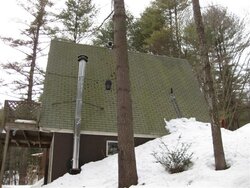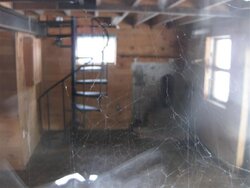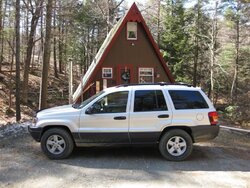We just purchased a roughly 1,000 sq/ft "A Frame" home in Southern VT. It has a loft bedroom, a main floor living area, kitchen, eating area and bathroom, and a lower level with a poured/block foundation. This is going to be our ski/weekend house. The house currently has a Rinnai wall heater(located on the main level) keeping the place warm. I plan to add another to the lower level; these will keep the home warm when we aren't there.
I'd like to get a wood buring stove. There's currently a hookup in the lower level. Outside, there's an insulated metal chimney. From what I understand, the previous tenants took the stove with them.
Any suggestions as what to look for? There's a stove place in Brattleboro, VT (about 15-20 minutes from the house) that sells wood stoves. I just want to make sure I get something correctly sized for the house. We'd use the woodstove for heating when we're there on the weekends, and as mentioned, the wall heaters would pick up the slack during the week.
I'd like to get a wood buring stove. There's currently a hookup in the lower level. Outside, there's an insulated metal chimney. From what I understand, the previous tenants took the stove with them.
Any suggestions as what to look for? There's a stove place in Brattleboro, VT (about 15-20 minutes from the house) that sells wood stoves. I just want to make sure I get something correctly sized for the house. We'd use the woodstove for heating when we're there on the weekends, and as mentioned, the wall heaters would pick up the slack during the week.





